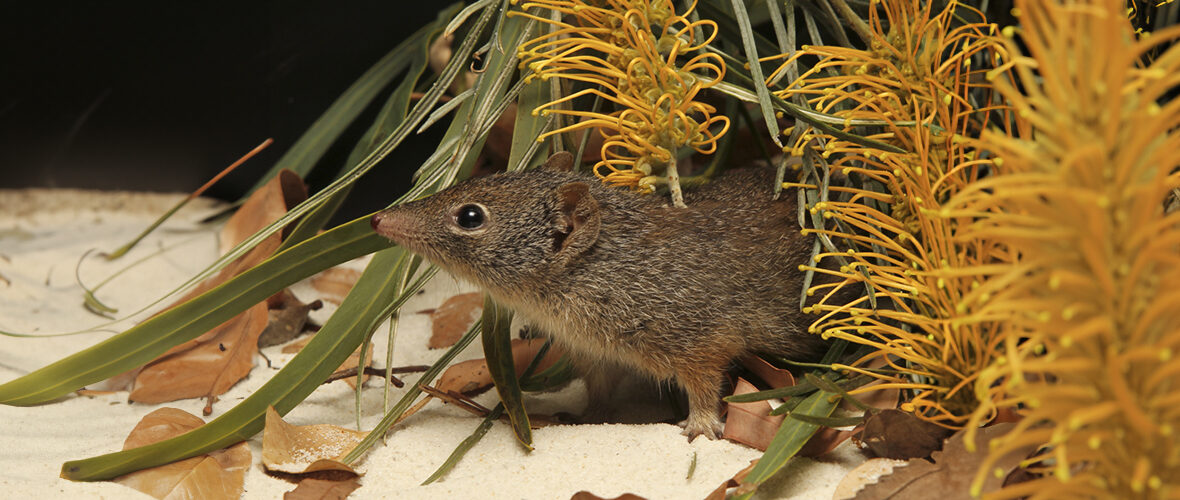
The dibbler is a species of carnivorous marsupial from southwestern Australia, as well as some offshore islands. In the early 19th century, dibblers were extensively distributed across Western Australia. By 1884, they were declared extinct, but in 1967 some were rediscovered at Cheyne Beach on the southern coast of Western Australia. Unfortunately, due to habitat loss and destruction at the hands of fires and fire suppression, and the introduction of invasive species – and with them predation, disease, and competition for food, these critters are listed as Endangered by the IUCN. Their numbers are also decreasing.
First the Stats…
Scientific name: Parantechinus apicalis
Weight: Up to 4.4 ounces
Length: Up to 6.3 inches, plus up to a 4.7 inch tail
Lifespan: Up to 3 years
Now on to the Facts!
1.) Dibblers are nocturnal (active at night), with some crepuscular (active at dawn and dusk) behaviors.
2.) These carnivores (eat meat) prey on various insects, arachnids, small reptiles, mice, and birds.
3.) Dibblers also feed on berries and nectar from flowers.
4.) They are a member of the order Dasyuromorphia, and the only member of the genus Parantechinus.
5.) These critters are solitary and only come together to mate.
But wait, there’s more on the dibbler!
6.) Mating sessions can take up to several hours.
7.) Females undergo up to a 53 day gestation that yields up to 8 joeys.
Did you know…?
These critters were recently released on Dirk Hartog Island as part of the Return to 1616 project run by the Department of Biodiversity, Conservation, and Attractions.
8.) They prefer unburnt vegetation habitats with a thick layer of litter and sandy soils, usually occupying coastal mallee-heath vegetation areas on the south coast.
9.) These marsupials were first described in 1842 by John Edward Gray.
10.) They also go by other common names such as the freckled antechinus and the speckled marsupial mouse.
But wait, there’s still more on the dibbler!
11.) Foxes and cats often prey on these critters.
12.) The dibbler is also effected by the plant disease called die-back. This causes the death of the plants that dibblers feed on.
Now a Short Dibbler Video!
Be sure to share & comment below! Also, check out the Critter Science YouTube channel. Videos added regularly!
Want to suggest a critter for me to write about? Let me know here.
Some source material acquired from: Wikipedia & IUCN
Photo credit: Earth.com



